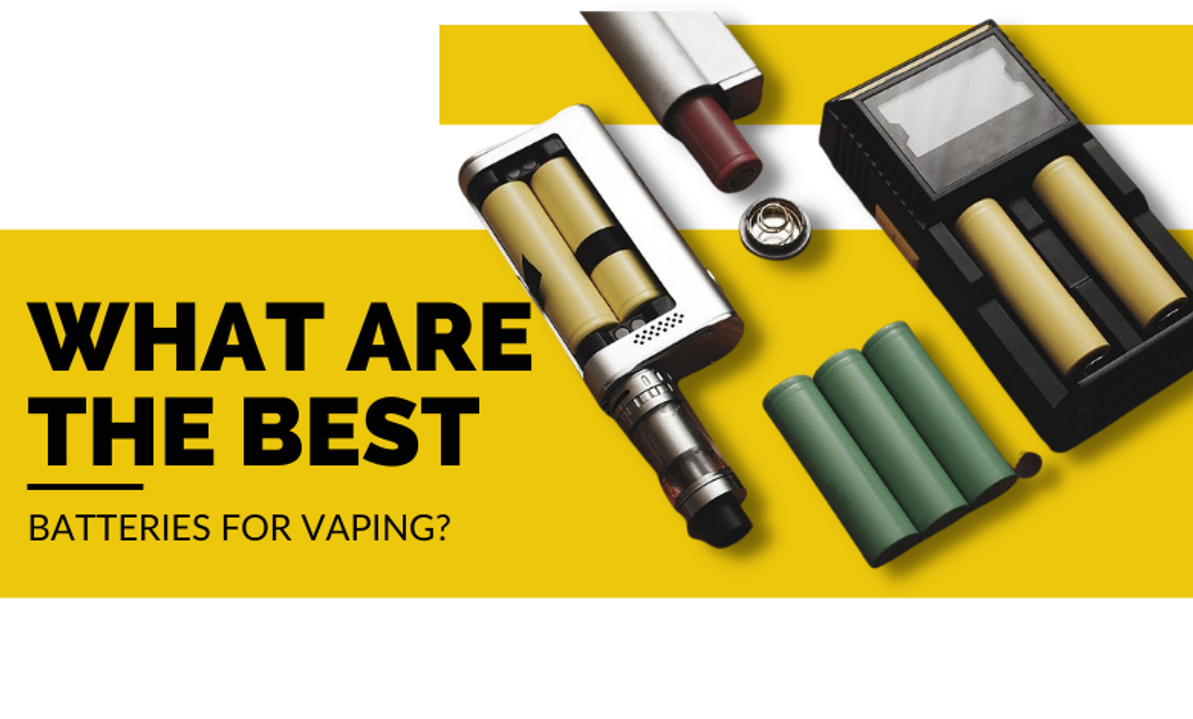What Are the Best Batteries for Vaping?
Vape batteries come in a variety of types, each with its own set of characteristics and benefits. The most common types of vape batteries are lithium-ion and lithium-polymer.
Lithium-ion (Li-ion) batteries
These are the most commonly used type of battery in vape devices. They have a high energy density and are rechargeable, making them a popular choice for powering electronic devices. Li-ion batteries are also relatively inexpensive and have a long lifespan. They have a tendency to degrade over time, and their performance may decrease after a certain number of charge cycles, but they are still considered reliable.
Benefits
- High energy density: Li-ion batteries have a high energy density, which means they can store a large amount of energy in a small space, making them ideal for portable electronic devices.
- Long lifespan: Li-ion batteries have a long lifespan and can be recharged many times without losing capacity, making them a more cost-effective option in the long run.
- Low maintenance: Li-ion batteries do not require regular maintenance and do not need to be fully discharged before recharging.
- Lightweight: Li-ion batteries are lightweight, making them easy to carry and handle, making them ideal for portable electronic devices.
- Wide availability: Li-ion batteries are widely available and can be found in many electronic devices such as smartphones, laptops, and power banks.
- Reliability: Li-ion batteries have a good reputation for reliability and performance.
Nickel-Cadmium (NiCad) Battery
Another type of battery used in vape devices is the nickel-cadmium (NiCad) battery. These batteries are rechargeable, but they have a lower energy density and a shorter lifespan than Li-ion batteries. They are also more expensive and have a "memory effect" which means that they must be fully discharged before being recharged. They are less common in vaping devices today due to their lower performance and higher cost.
Benefits
- Good low-temperature performance: NiCad batteries have a good low-temperature performance, which means they can still function in cold temperatures.
- Memory-free: NiCad batteries are "memory-free" which means that they do not suffer from a "memory effect" where the battery's capacity is reduced if it is not fully discharged before recharging.
- Longer service life: NiCad batteries have a longer service life than other types of batteries and can last for many years with proper use and maintenance.
- High discharge rate: NiCad batteries have a high discharge rate, which means they can deliver a high amount of current when required.
- Low self-discharge rate: NiCad batteries have a low self-discharge rate, which means they can retain their charge for a longer period of time.
Lithium-polymer (Li-poly) batteries
Lithium-polymer (Li-poly) batteries are similar to Li-ion batteries in terms of performance, but they are typically more expensive and have a slightly lower energy density. They are also more flexible in terms of shape, making them a good choice for use in devices with tight space constraints. Additionally, Li-poly batteries do not have a "memory effect" like some Li-ion batteries, meaning that they can be charged at any time without affecting the overall performance of the battery.
Benefits
- Li-poly batteries can be made in a variety of shapes, making them a good choice for use in devices with tight space constraints. This allows for a more compact and portable design for electronic devices.
- Li-poly batteries do not have the "memory effect" which means that they can be charged at any time without affecting the overall performance of the battery.
- Li-poly batteries have a higher number of charge cycles, meaning they can be recharged more times without losing capacity. This makes them a more cost-effective option in the long run.
- Li-poly batteries are more resistant to extreme temperatures, which makes them more suitable for use in outdoor and extreme environments.
- Li-poly batteries have a lower internal resistance, which leads to higher efficiency and less heat dissipation.
- Li-poly batteries are lightweight, making them easy to carry and handle, making them ideal for portable electronic devices.
Nickel-Metal-Hydride (NiMH) batteries
Another type of battery used in vaping is the nickel-metal-hydride (NiMH) battery. They have a similar performance to NiCad batteries and also have a "memory effect" which means they need to be fully discharged before recharging. They have a higher energy density than NiCad batteries and are less toxic. They are also less common in vaping today.
Benefits
- High energy density: NiMH batteries have a higher energy density than nickel-cadmium batteries which means they can store more energy in a smaller size.
- Longer lifespan: NiMH batteries have a longer lifespan than nickel-cadmium batteries, which means they can be recharged more times before their capacity decreases.
- Lower toxicity: NiMH batteries are less toxic than nickel-cadmium batteries and are considered safer to use and dispose of.
- No memory effect: Like NiCad, NiMH batteries do not suffer from the "memory effect" where the battery's capacity is reduced if it is not fully discharged before recharging.
- Widely available: NiMH batteries are widely available and can be found in many electronic devices such as portable power banks and toys.
What Should You Know Before Buying a Battery for Your Vape?
Before buying vape batteries, it's important to consider a few key factors to ensure that you are purchasing a high-quality, reliable product that will meet your needs. Here are some things to keep in mind:
- Battery capacity: The capacity of a battery is measured in milliampere-hours (mAh) and indicates how much energy the battery can store. Higher capacity batteries will last longer between charges, but they may also be larger and heavier. Consider the capacity you need based on your usage and device.
- Voltage: The voltage of a battery indicates how much power it can deliver at one time. Be sure to choose a battery with the correct voltage for your device.
- Battery type: The most common types of batteries used in vape devices are lithium-ion and lithium-polymer. Li-ion batteries are widely used due to their high energy density, low cost, and long lifespan. Li-poly batteries are more expensive but have a slightly lower energy density, and are more flexible in terms of shape.
- Safety features: Look for batteries that have built-in safety features such as overcharge protection, short-circuit protection, and over-discharge protection. These features will help to prevent damage to your device and protect you from potential hazards.
- Brand and retailer: Choose a reputable brand and retailer that offers high-quality, reliable products. Read reviews and check the authenticity of the retailer, and make sure they have return policies in case of defects.
- Proper storage: Proper storage of batteries is important to ensure their longevity and performance. Store them in a cool, dry place and avoid exposing them to extreme temperatures.
Recent Posts
-
American Made Vapes: Guide to the Best Made in the USA Vapes
The search is over for top-quality disposable vapes that are a class apart and stand out in terms of …Sep 18th 2025 -
RifBar MixPro 40K Review: Redefines Performance
The vaping industry is moving rapidly toward customizable, high-performance disposables – and the Ri …Sep 9th 2025 -
Flum UT 50K Review: Incredible Flavor Control Feature
The Flum UT Bar Vape takes disposable vaping to an entirely new level, and VapeMoreInc is thrilled t …Aug 26th 2025





